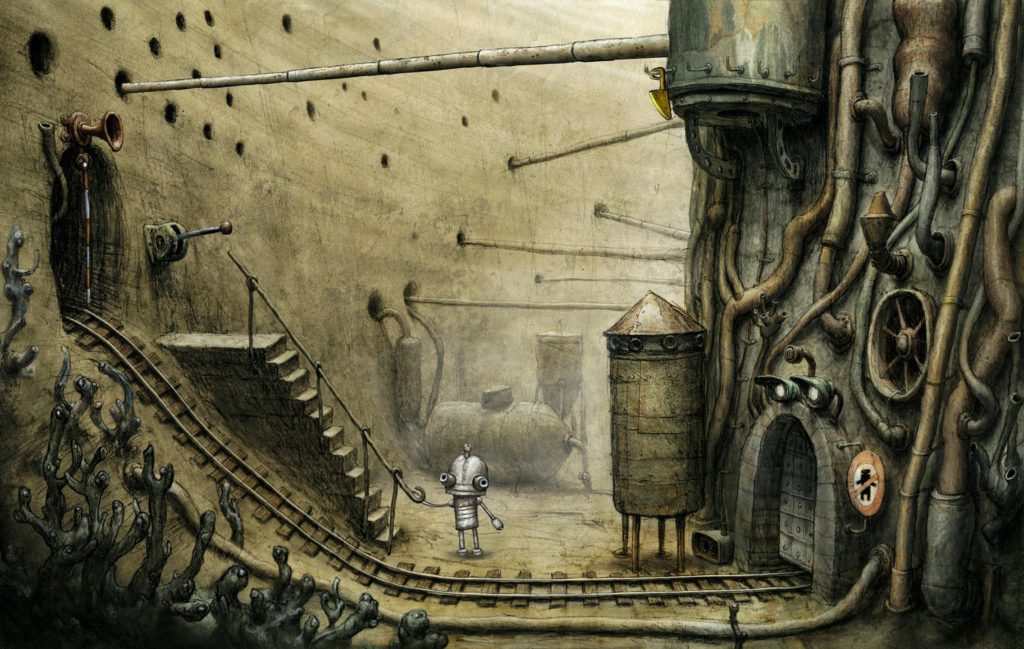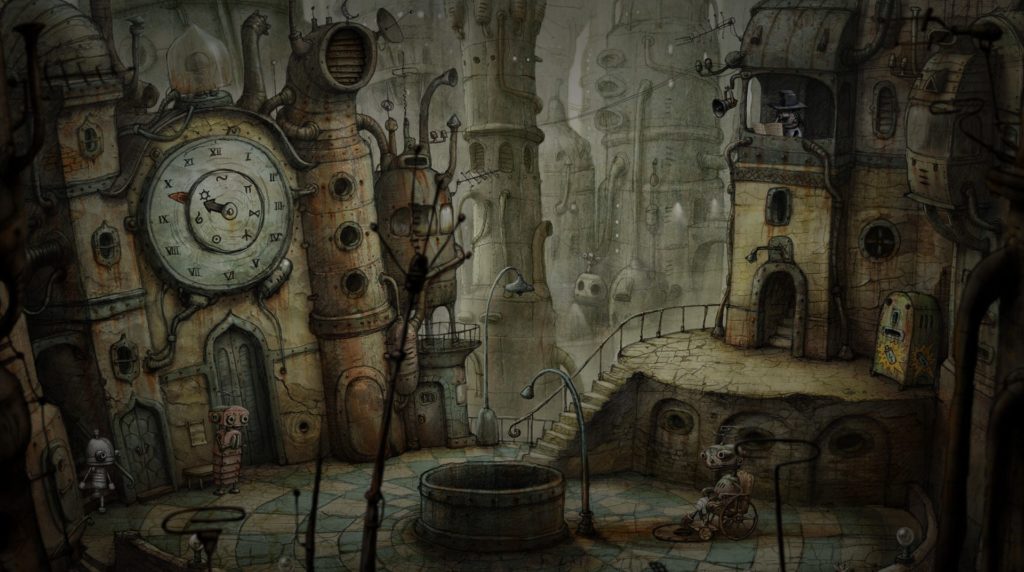I’m kind of in love with Machinarium.
That really sets the tone for the whole review, doesn’t it? The thing is, I’m exactly the kind of person that a game like Machinarium is targeted towards. I love adventure games, and being an indie developer myself, I’m always partial to the unique gems that come out of tiny studios. So I’ll just spell it out right now: if you’re partial to a bit of old school point-and-click action, and appreciate a moody and engrossing atmosphere, definitely check this title out.
Need more convincing? Read on.
This is an adventure game in the traditional sense. You click to move around and interact with objects, moving from screen to screen as you solve a huge number of puzzles. You’re going to need some brains to get anywhere in this game – like the adventure titles of yore, some puzzles will have you staring at the screen for a long time.

The way Machinarium makes this work, however, is by segmenting everything into bite-sized pieces. Each location is (generally) self-contained, and mostly on a limited number of screens. Once you work out how to solve the puzzle on that screen, you can move on. This makes it great to pick up and play in brief stints – and the fact that the game loads up nigh on instantly merely adds to the convenience.
Of course, you will come across puzzles in the game that stump you to the point of anger. Thankfully, there’s a hint system in the game and, for times of complete frustration, a book you can unlock that gives you a full explanation of what you need to do. In a nice twist, you need to play through a very simple side-scrolling shooter to unlock the book each time. It’s not hard, but it takes some time, discouraging you from relying on the walkthrough too often.
The story centres on a young robot cast out of his city. With your help, he needs to get back inside, rescue his girl robot, and prevent a bomb from detonating. It’s a simple yarn that fits the game’s ethos well.
The aesthetic is sort of a cute steampunk. While the game was built in Flash, its graphics definitely don’t look like the simple geometric shapes you associate with vector-based artwork. Every screen, every object, every interface element looks like it was hand-drawn with the utmost care. It’s all wonderfully cohesive, and helps create a world that feels lonely, sad, whimsical and adorable, all at the same time.
Contributing to this is the total lack of dialogue. I’d love to see this in more games – seriously, don’t you think Sonic was cooler before he opened his yap and never stopped talking? In Machinarium, everything is either pantomimed or communicated via animated thought bubbles. It’s a very effective storytelling method, one that keeps the robots you meet extremely accessible, while also imbuing them with a ton of personality.
There’s a ton of charm here, and for the most part it’s enough to keep you going even as the game’s puzzle structure starts feeling burdensome. As the scope of the puzzles broadens, it can be hard to work out where to start or what to do, and you’ll often have to painstakingly click through objects one by one before getting anywhere. This will annoy some more than others – just bear in mind that the game expects you to work for a solution a lot of the time. The other major thing that stuck out is the slow walking speed of your main character. While it obviously evokes the unhurried, peaceful pace of the game, having to traipse back and forth over several screens to click on lots of different objects ends up taking a lot longer than I would have liked.

If you’re at all interested in Machinarium, however, these things are easily bearable. The game is worth experiencing for the atmosphere alone – it’s a great world to get caught up in, yet at the same time it’s very easy to simply dip your toe once in a while.
In actual fact, I had already bought Machinarium well before being assigned this review. What’s great about the retail copy, however, are the goodies that come with it. In addition to the game, you also get a soundtrack CD, a walkthrough book (very handy!) and a cool poster. It’s a very good value proposition – definitely consider grabbing this version over the online one. Regardless, you should know that nearly any computer – PC or Mac – bought in the last five or more years will be able to run the game just fine.
So, are you intrigued? You should be – go get a copy pronto and see how you like this quirky, charming (did I already say that?) tale of a robot and his wonderful world.